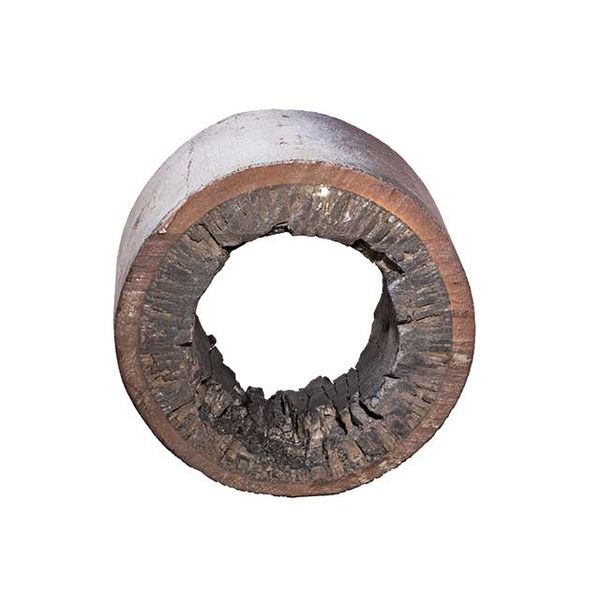

- Home
- Companies
- HRS Heat Exchangers Ltd.
- Articles
- Understanding and preventing heat ...
Understanding and preventing heat exchanger fouling
When operating in exceptionally challenging conditions, or handling difficult materials such as sewage and wastewater sludges, even the best designed heat exchangers will be susceptible to fouling. Understanding the different types of fouling and what causes them will help engineers and operators pick the best type of heat exchanger for their particular application and keep it running in optimum condition.
The impact of fouling in heat exchangers has been recognised since 1910 when the first research on the issue was carried out. Since then there have been many developments, from patented solutions to standard good practice such as maintaining flow rates and carefully controlling temperatures. A well designed heat exchanger will take the standard ‘fouling factor’ for the material it is to handle into account at the specification stage, ensuring that sufficient heat exchange occurs when normal levels of fouling are experienced in operation.

The most common definition of fouling, in relation to heat exchangers, is generally defined as the deposition and accumulation of unwanted material, such as scale, suspended solids, insoluble salts and even algae on the internal surfaces of the heat exchanger. Depending on the materials involved, this fouling can occur on both the primary and service surfaces of the exchanger, and sometimes both at once.
Fouling has a significant impact on heat transfer across the heat exchanger surface, and therefore on the overall operational performance and, ultimately, the economics of the process.
The build up of fouling also reduces the cross sectional area of the tubes or flow channels and increases the resistance of the fluid/s passing over the surface. These side effects combine to increase the pressure drop across the heat exchanger, reducing flow rates and aggravating the problem further. In the worst cases the heat exchanger quickly becomes blocked.
Finally, depending on the fouling deposits involved, they can lead to corrosion of the heat exchanger which can often be hidden by the fouling layer itself. This shortens the working life of the heat exchanger and can result in catastrophic failure.
The fouling factor represents the theoretical resistance to heat flow due to the build-up of a fouling layer on the tube surfaces of the heat exchanger. In practice, fouling factors are often overstated by the end user in an attempt to minimise the frequency of cleaning. In reality however, using the wrong fouling factor may actually result in the need for more frequent cleaning.
The fouling factor is a mathematical value (usually referred to as Rf or Rd) which represents the thermal resistance of the deposit/s and is effectively a ratio between the transfer coefficient of a clean heat exchanger and the same unit after fouling.
Standard values are available for a number of common liquids and gases such as fuel oil, sea water and alcohol vapour. However, for many materials, including those with the highest fouling factors such as sludges, it is best to analyse the substance in order to achieve an accurate result.
One of the first signs of significant fouling beyond design parameters is a loss of performance as heat transfer deteriorates.
An increase in pressure drop can sometimes be seen as fouling builds up, but it is unreliable as an indicator of heat exchanger performance and is certainly not as effective or reliable as monitoring heat transfer performance.
There are different types of fouling, which can vary according to a number of factors, such as the operating conditions in which the heat exchanger is used. There are also different terms used globally for the different types of fouling and this can lead to confusion about what is actually happening in a particular situation.
In simple terms there are four different types of fouling as follows:
- Chemical fouling, or scaling, occurs when chemical changes within the fluid cause a fouling layer to be deposited onto the tube surface. A common example is scaling in a kettle or boiler caused by “hardness” salts depositing onto the heating elements as the solubility of the salts reduce with increasing temperature. The likelihood of scaling in particular increases with rising temperature, concentration and pH levels. Such effects can be minimised by careful control of the tube wall temperature in contact with the fluid. Chemical fouling must be removed by either chemical treatment or mechanical de-scaling.
- Biological fouling is caused by the growth of organisms, such as algae, within the fluid which deposit out onto the surfaces of the heat exchanger. While outside the direct control of heat exchanger designers, it can be influenced by the choice of material. For example non-ferrous brass materials are poisonous to some organisms. This type of fouling is also removed by either chemical treatment or mechanical brushing processes.
- Deposition fouling (also known as sedimentation fouling) occurs when particles contained within the fluid settle out onto the surface, usually when the fluid’s velocity falls below a critical level. Good heat exchanger design, including the calculation of the critical velocity for any combination of fluids and particles, should result in minimum working velocities above this critical level. Mounting the heat exchanger vertically can also minimise the effect as gravity pulls any particles out of the heat exchanger away from the heat transfer surface even at low velocity levels. Deposition fouling is normally removed mechanically by brushing or scraping.
- Corrosion fouling occurs when a layer of corrosion products builds up on the surfaces of the tube forming an extra layer of material, which often has a thermal resistance. It should not be confused with corrosion occurring under the fouling layer as mentioned previously. The careful use of corrosion-resistant materials such as stainless steel is a key factor in preventing corrosion fouling.
In all cases prevention in better than cure: preventing or reducing fouling will be cheaper and more effective in maintaining heat exchanger performance than removal or cleaning.
Some of the methods to reduce each type of fouling have already been discussed. Using corrugated tubes in heat exchanger construction, as HRS does, is beneficial in preventing both deposition fouling and chemical fouling. Deposition fouling is reduced due to greater levels of turbulence at lower fluid velocities, while chemical fouling is often reduced because the enhanced heat transfer coefficients produced by the corrugated tube result in tube wall temperatures closer to the bulk fluid temperature of the working fluids.
The surface of the heat exchanger will also have an effect, and rough surfaces are known to collect particulates which increases fouling. The smooth polished surfaces which can be achieved on tubes made from 304 or 316 stainless steel will also help to minimise fouling.
While some forms of fouling are unavoidable, careful design and choice of the right heat exchanger, for example using corrugated tubes, can go a long way to minimising the effects. The first step should always be to analyse both the product and service fluids in order to calculate accurate fouling factors, and this is then followed by good design to ensure adequate fluid velocities, temperatures and other operating parameters.
The design will also take into account the likelihood of fouling and the required frequency of inspection and cleaning, and so will include features to make these processes as quick and simple as possible, such as integrated inspection panels and removable tubes.
Providing as much information at the design phase is undoubtedly the best way to keep your heat exchangers running effectively for many years.
